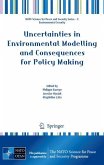1.1. SAFETY OF CIVIL STRUCTURES Society expects that the failure of civil structures is extremely rare and relies on the care and expertise of the professionals involved in the design, construction and maintenance of structures. This is in particular true for public technical systems such as transportation or energy supply systems and structures such as bridges. Structural safety may be defined as follows: "Adequate safety with respect to a hazard is ensured provided that the hazard is kept under control by appropriate measures or the risk is limited to an acceptable value. Absolute safety is not achievable." It is thus not the structure as such that is designated safe but rather the people, goods and the environment in its surroundings. The continued use of existing structures is of great importance because the built environment is a huge economic and political asset, growing larger every year. Nowadays evaluation of the safety of existing structures is a major engineering task,and structural engineers are increasingly called upon to devise ways for extending the life of structures whilst observing tight cost constraints. Also, existing structures are expected to resist against accidental actions although they were not designed for. Engineers may apply specific methods for evaluation in order to preserve structures and to reduce a client's expenditure. The ultimate goal is to limit construction intervention to a minimum, a goal that is clearly in agreement with the principles of sustainable development.








